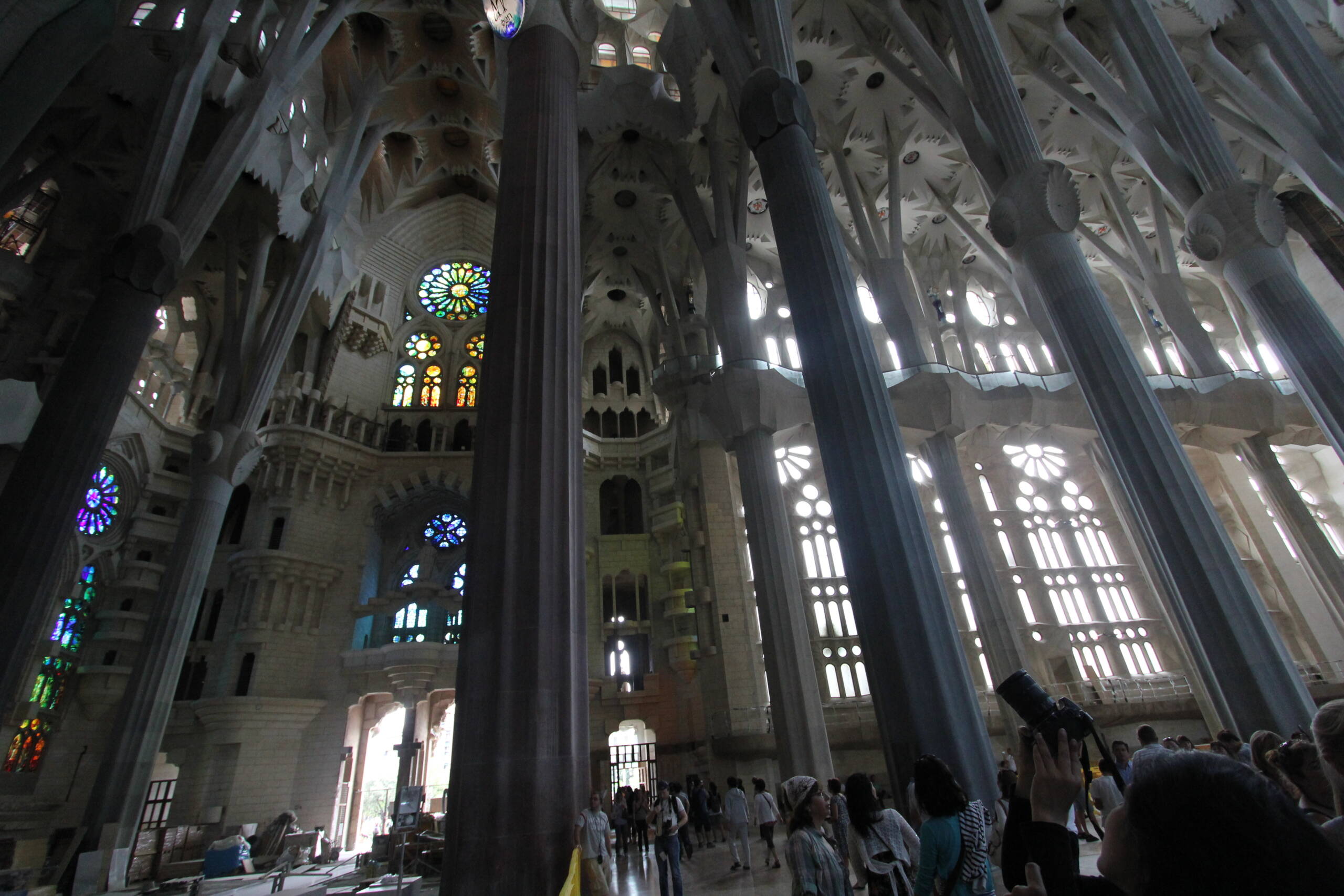There’s a strange feeling that hits the moment you step inside, almost like the air itself thickens and every sound dulls into a hushed awe. The forest of pillars rises in impossible height, stretching upward until the ceiling becomes less architecture and more celestial geometry—angled ribs, organic curves, and those signature branching supports that feel closer to bones or trees than anything human-made. In the photo, your angle makes the space even more towering; the columns lean slightly, almost like they’re breathing or shifting, and the height seems to swallow perspective.

Light falls differently here—never harsh, never flat. Near the center, the stained-glass windows glow in gradients: emerald fading into gold, sapphire bleeding into violet, a soft fire suspended in stone. The way Gaudí calculated the spectrum is visible only after a quiet pause; the warm tones collect on one side where morning sun enters, the cooler tones seep into shadows where the columns stand in muted grays and soft blues. That rainbow above isn’t decoration—it’s choreography. You see it particularly in the upper rose window in your shot: a radiant wheel of color surrounded by delicate stone tracery, almost floating against the massive wall behind it.
People move at the bottom of the frame—tiny figures, some looking up with cameras, some standing still, some walking as if they’ve forgotten where they were going. Their presence is almost comical, small and uncertain, because everything around them feels larger than intention. The woman at the right, mid-gesture with her camera lifted, looks like she’s trying to capture the impossible: scale, light, awe—all fighting against a lens too small for a place like this.
The floor feels unfinished in places, almost like a reminder that this basilica is still becoming—not a relic but a living project. That slight rawness softens the grandeur. It reminds you this wasn’t built by gods, even though it feels like something close.
And honestly, there’s a beautiful contradiction here: the architecture is overwhelming, yet oddly delicate. Monumental, yet soft. Ordered, yet organic. You stand there not really sure whether to admire the engineering or surrender to the emotion. And maybe that’s the whole point—you’re allowed to get lost, to feel small, to let your eyes wander upward and forget for a moment how ordinary the rest of the world feels outside those doors.
If you felt lost in the grandeur, you weren’t lost at all—you were exactly where the architect wanted you: humbled, lifted, and just a little breathless.
Leave a Reply